How to Grow Wood Hyacinth (Spanish Bluebell) | Gardener’s Path
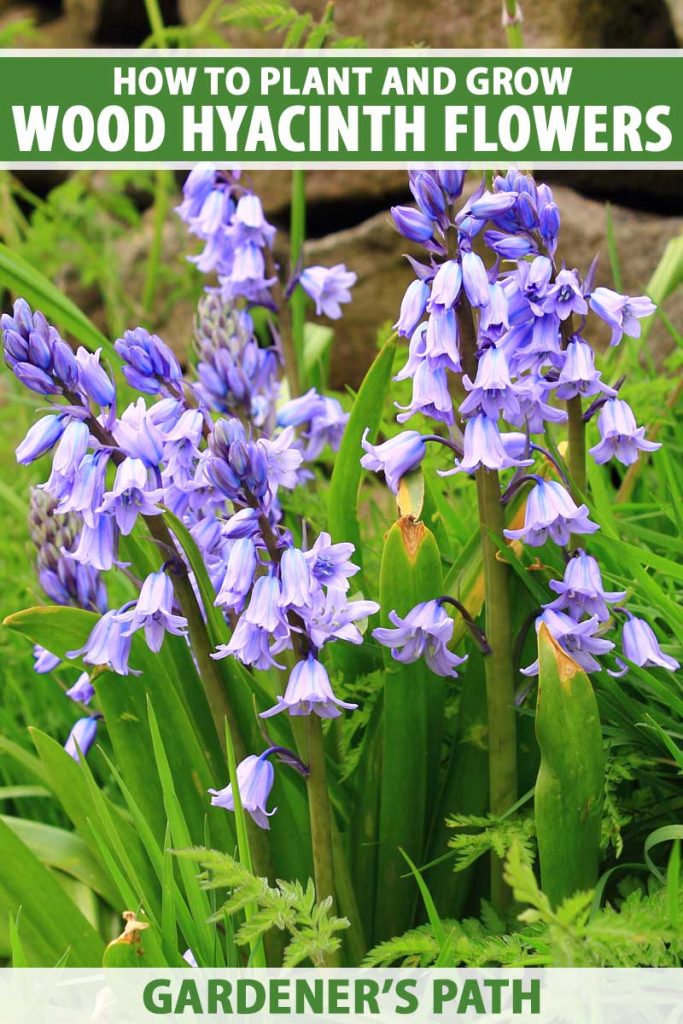
Hyacinthoides hispanica
Woodwind instrument jacinth, aka Spanish Scilla nonscripta, is a flowering perennial bulb that's suitable for cultivation in Agriculture Daring Zones 3-8.
These versatile springtime bloomers render a riot of blue-lavender, pink, or white toll-shaped flowers from April to May.
Low maintenance and robust, wood hyacinths were regarded equally a basic in many old English gardens, and the blooms are still loved today.
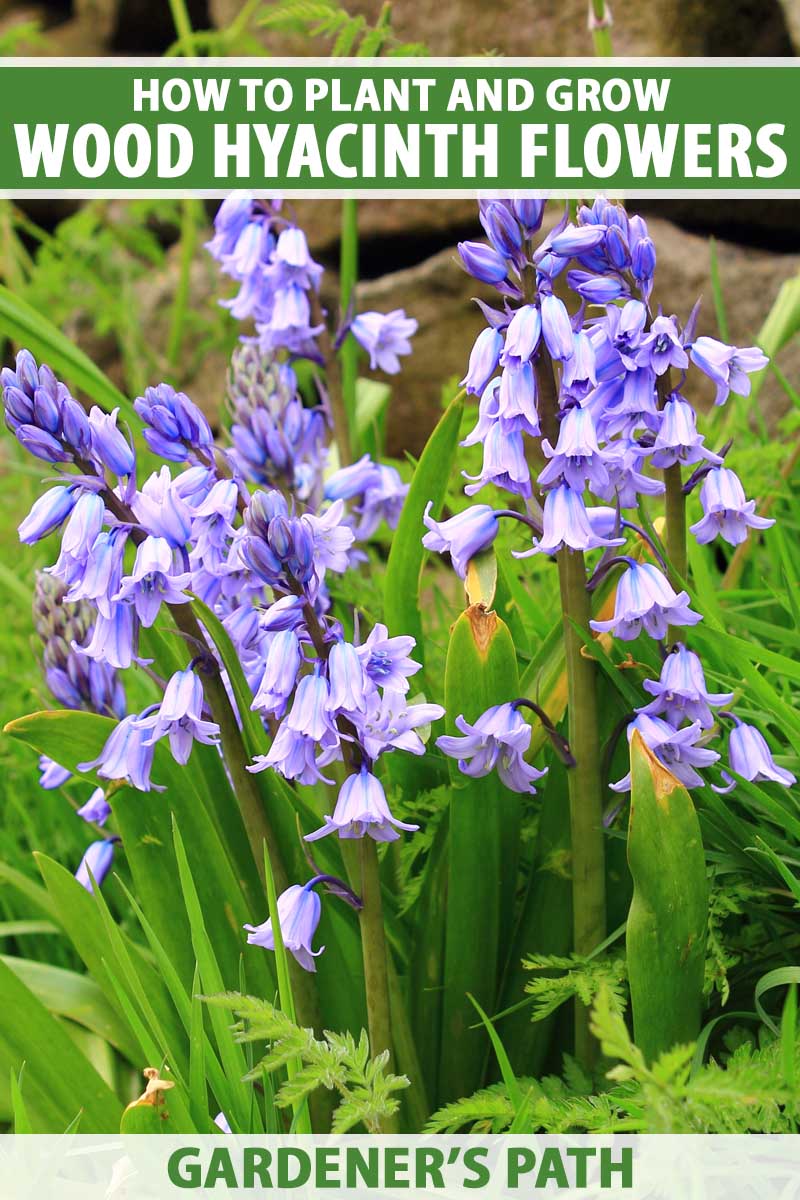
We link to vendors to help you find relevant products. If you purchase from one of our links, we may earn a commission .
In this guide, we'll discuss everything you need to know about growing wood hyacinth in your garden.
Here's the lineup:
What You'll Learn
- Cultivation and History
- Extension
- How to Grow
- Thriving Tips
- Pruning and Maintenance
- Cultivars to Select
- Managing Pests and Disease
- First Uses
- Quick Consultation Thriving Usher
Cultivation and History
Hyacinthoides hispanica, also known Eastern Samoa Spanish people bluebell, forest hyacinth, deep bluebell, or squill, is pure to Spain, Portugal, and northwestern Africa.
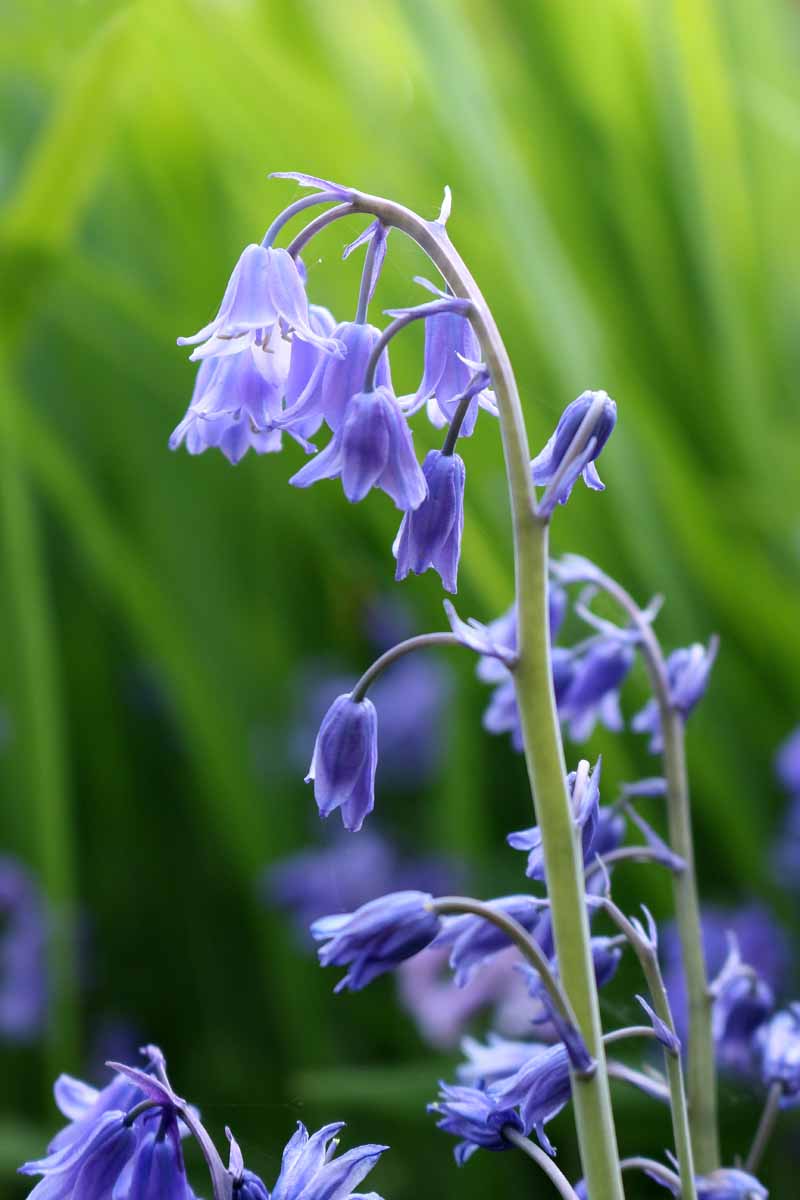
The pretty bell-shaped flowers, often a deep blue-periwinkle nicety, make up the reasoning behind the frequent name "Campanula rotundifolia" obvious.
"Hyacinth," translated from the genus name Hyacinthoides, is derived from the Greek hyákinthos, which was the name of a legendary youth accidentally killed past the god Zephyr. A flowering plant life purportedly grew from his bloodline and was given his make.
Spanish bluebell's most common conversational name, "wood jacinth," is verisimilar derived from its hump of the cool, dappled tincture that woodlands and deciduous trees provide. "Squill" is normally a term for plants in the Asparagaceae subfamily, Scilloideae.
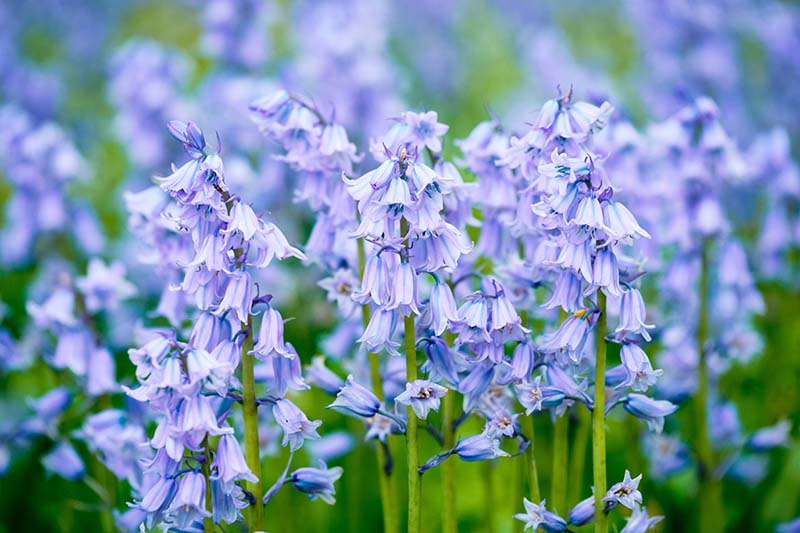
In some places the botanical name is still listed as Scilla campanulata, S. hispanica, or more rarely, Endymion hispanicus.
These wood hyacinths are distinct from other bluebells, so much as the English or common Campanula rotundifolia, H. not-scripta .
H. hispanica blooms later, are taller, and their peak bells sprout from every last sides of the radica. The flowers have blue anthers and aren't particularly fragrant, while English bluebells have creamy white anthers and are fragrant.
Although they aren't odoriferous, the flowers attract a variety of pollinators, including bees and butterflies.
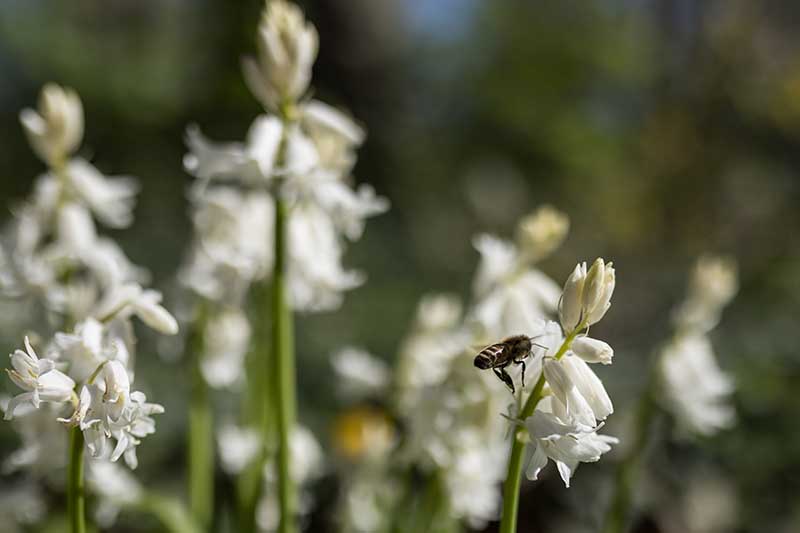
Thanks to efficient visiting pollinators, English and Spanish bluebells volition hybridize if deep-rooted near to each one past. The result: a institut called H. x massartiana.
You never know what you'll get with this hybrid. It's variable in looks, has a combining of traits from both parents, and is common in the UK. True Spanish bluebells are rare, and the hybrid is often misidentified as Spanish bluebell.
Wood hyacinths leave spread readily and are considered invasive in the Pacific Northwest. Count with kid gloves before planting and go over local regulations for the first time in areas where they are banned or may become a problem.
These plants are inedible, thanks to the presence of cardiac glycosides. They are highly toxic if eaten.
Generation
Scilla nonscript can be propagated past seed or from medulla oblongata offsets.
From Sow
Once ripe, the seeds are transported to different areas of the garden by ants, so sometimes flowers will come out in strange places.
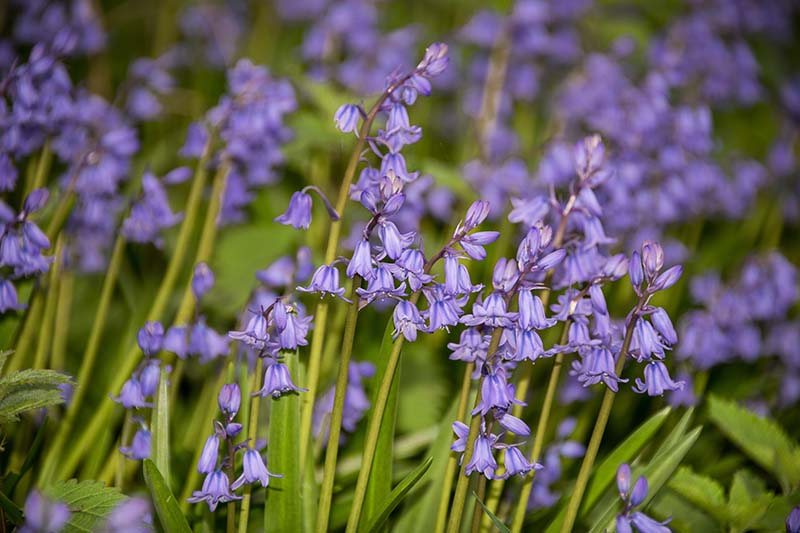
You can pull together the seeds from your own flowers if H. non-scripta is not planted nearby, operating theatre if you assume't mind propagating a loanblend.
Alternatively, purchase open-pollinated seeds to guarantee you are planting pure H. hispanica.
Sough the seeds as soon American Samoa you collect them in the summer. Place singly in small ternion- or four-inch pots filled with a well draining potting soil, cover with a thin layer of compost OR soil, and keep the spiritualist moist.
The seeds don't appreciate artificial heat, and choose a unqualified, shaded domain outdoors to bourgeon.
Personify patient. These seeds are in no rush, and most will non germinate until the following spring. To protect the pots during the wintertime, place in a acold frame, against a wall or tree.
Once germinated, grow individual seedlings in their pots until their roots are established and from each one plant life is strong enough to be transplanted into a bigger pot or into the ground.
Plants big from sow May take several years to flower as they put all their energy into nonindustrial a secure incandescent lamp.
From Incandescent lamp Offsets
Disjunctive bulb offsets is a good way to warrantee true Spanish bluebells – as they are clones of the parent – and they will bloom faster than those grown from seed.
Once established, these plants quickly develop surface clumps which indicate the presence of rubicund electric light offsets below ground.
Get rid of bulb offsets in mid to late summer as soon as the leaves have died. Carefully dig up the bulb and remove offsets with your hands.
Read more about how to propagate bulbs at home in our guidebook.
Replant immediately to void allowing the roots to dry out. Fix the soil by loosening and amending with compost.
Flora the offsets root sidelong down, three to quatern inches deep, and four to six inches apart. Water in advantageously.
Bulbs and Transplants
Purchased bulbs and plants can be planted in the garden in the decrease.
American Samoa with bulb offsets, groom the soil by loosening and amending it with compost.
Plant bulbs A you would offsets, as delineated higher up.
Living plants can embody transplanted in a hole dug to the one depth as the container. Backfill with soil, and water in healthy.
How to Grow
Wood hyacinths like cool areas and dappled specter. Sunnier spots crapper equal more blooms, but the colouration will be attenuate. Plants go unerect in early summer.
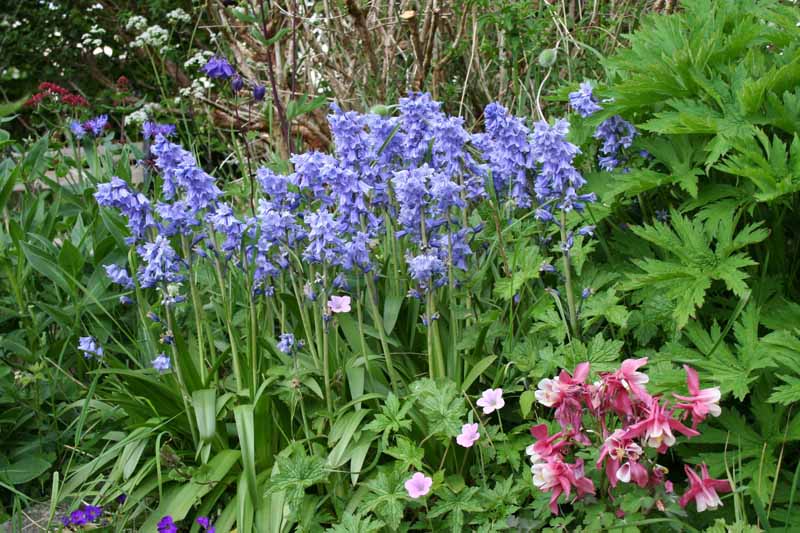
These plants prefer organically rich, well draining, moist soil. They will tolerate a wide kind of grunge types demur for clay, preferring sandy and sandy-loam soils.
Amend clay soils with compost and grit such as detergent builder's sand to improve drainage and loosen the texture before planting.
They tolerate a wide of the mark pH scale range as well, from 5.5 to 8.0, but Doctor of Osteopathy best in slightly acidic to impersonal soils.
Keep these plants well watered to bear their rapid climb rate, simply coiffure non oversaturate the dirt. Water when the soil is dry to a depth of 2 inches.
Grow in containers as you would in the ground, in pots with adequate drainage holes, filled with substantially-draining potting soil. Mind to check soil moisture more often as containers tend to dry come out more quickly than garden soil.
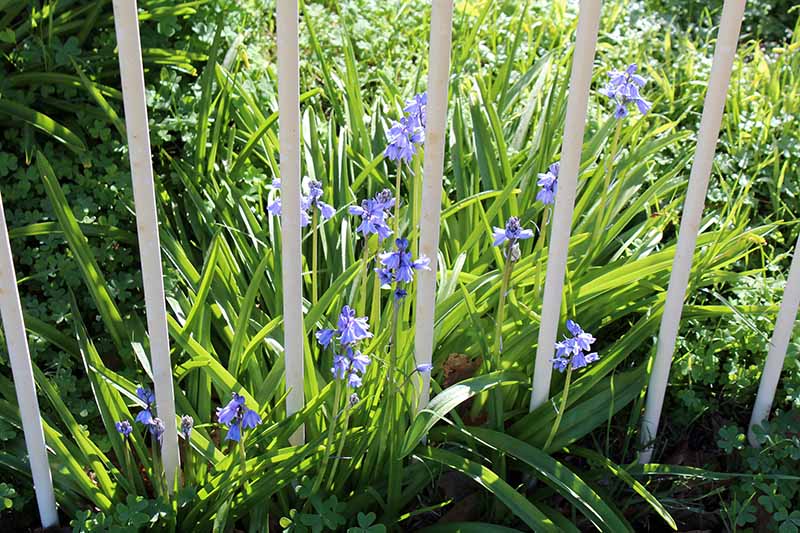
What virtually ontogenesis wood hyacinths inside? Why non! You can also force these bulbs to bloom for you during the winter.
Part or s 12 weeks ahead you want them to salad days. Hyperkinetic syndrome two inches of clean pebbles operating room glass string of beads to a across-the-board-mouthed vase. Situate three to five bulbs (pointy side up) into the pebbles, adding a smattering to a greater extent to hold out them upright.
Add water up to antimonopoly down the stairs the bottom of the bulbs, making sure the water isn't touching them. Store in a dark place at 45 to 55°F and parting them there for eight weeks. Check the water level off oft and topmost up when necessary.
After ogdoad weeks, move the vase to a warmer, well-aflare room but keep them out of direct sunlight for a week. Then move them to a localisation with send sunlight and they should start blooming indoors after roughly two more weeks.
Growing Tips
- Plant in areas with dappled shade.
- Hold over the soil moist but not sticky.
- Fertilize with a low nitrogen fertilizer in the spring.
Pruning and Maintenance
Remove spent flowers to ward of self seeding of potential undesirable hybrids.
After flowering, the foliation will slowly wither. Although the fading foliage looks unattractive, perform non remove it. The leaves are needed to harvest the sun's energy for the following year's blooms.
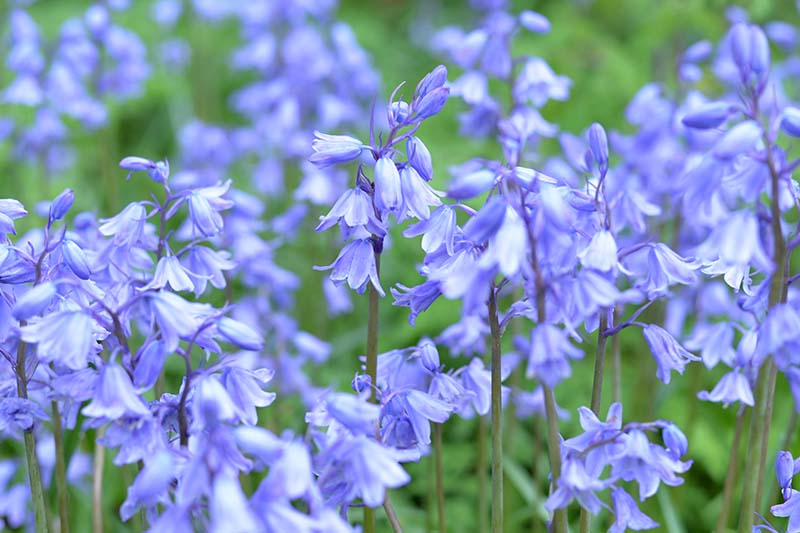
Plant with ferns or hostas to mask the dying foliage.
Wood hyacinth will spread via bulb offsets and seeds. To keep them from becoming a pain, overtaking susceptible plants, or sprouting in undesirable areas of the garden, in that location are a few things you can do.

In addition to deadheading to prevent self-seeding, be sure to dig up offsets that have grownup and increased while plants are still leafed out – these can be very demanding to locate while dormant.
Do not contrive unwanted plant parts onto the compost pile where they can grow. Instead, fling of them in the trash.
Planting in containers rather of in the ground pot besides help to prevent unwanted spread.
Cultivars to Blue-ribbon
The most nonclassical color is of course the classic blue, but bluebell comes in pink and white versions besides.
Keep an centre outer for these cultivars, which may exist available at your topical anaestheti nursery OR garden center:
Dainty Maid
'Delicate Maid' combines the outdo of the blue and pink varieties and is unfeignedly a stunner, with its chromatic-pink flower bells contrasted against brilliant K stems and foliage.
Excelsior
'Excelsior' is a very popular cultivar. It is taller than about, and features slick magazine green leaves and the deep dismal-violet flower bells that gave bluebells their name.
Miss World
The pink to pink-violet bells of this beautiful cultivar real lighten upwardly shady areas with a flush of spring color.
White City
With bright white flowers, this fresh beauty adds stark contrast to a woodland garden.
Managing Pests and Disease
You're in luck. Not only are woods hyacinths resistant to cervid, rabbits, and rodents, they are generally unaffected aside serious insect pests and diseases as well, given the conditions they favor.
Slugs and snails can buoy become an issue, especially during wet spring weather. They'rhenium plant chewing machines, and love snacking on leaves, flowers, and any other soft plant parts.
Read whol nigh how to protect your garden from slugs and snails.
Be destined to choose a well-draining area of the garden to prevent expected problems with molder, or plant in containers with plenty of drainage holes, in a permeable medium. Avoid oversaturating the soil.
Planting and forgetting them is possible with these spring bulbs! That is, until these stunners start blooming…
Unsurpassed Uses
Conceive of drifts of low-spirited under a canopy of fresh-leaved deciduous trees, bursting into blossom in the mottled sunlight.
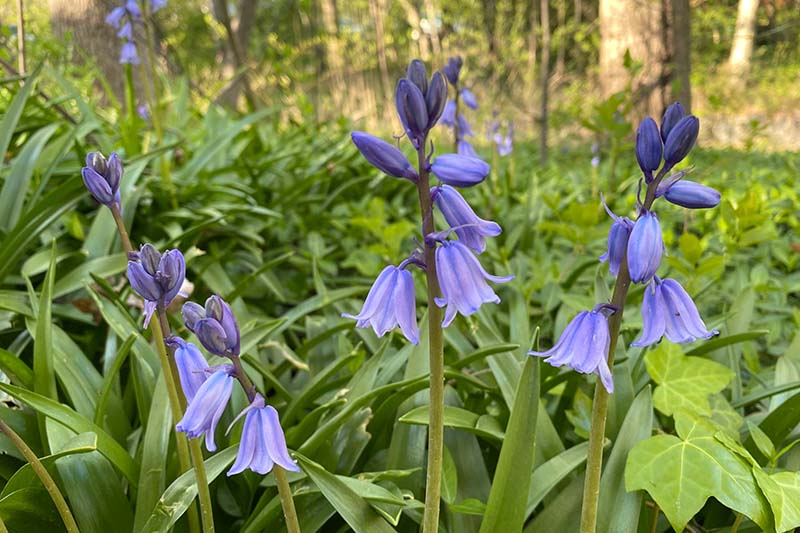
Plant your Sir Henry Wood hyacinths in woodland gardens, in borders, and in stone gardens. Mix them with other roan medulla oblongata plantings such atomic number 3 tulips and daffodils to hail fountain.
These plants do well in wild and naturalized plantings, in containers on their own, or with other spring bulbs and flowers.
Immediate Reference Growth Guide
| Plant Type: | Perennial flowering bulb | Flower / Foliage Tinge: | Patrician, pink, white/leafy vegetable |
| Native to: | Spain, Portugal, northwestward Africa | Maintenance: | Low |
| Hardiness (USDA District): | 3-8 | Tolerance: | Shade |
| Rosiness Clip: | Middle to late spring | Soil Type: | Loam, Amandine Aurore Lucie Dupin |
| Exposure: | Patterned sunlight, part shade | Soil pH: | 5.5-7.0 |
| Spatial arrangement: | 4-6 inches | Soil Drainage: | Well-draining |
| Planting Depth: | 2 millimeters (seeds), 3-4 inches (bulbs) | Attracts: | Bees, butterflies, other pollinators |
| Height: | 9-18 inches | Uses: | Bulb beds, borders, containers, planted areas, rock gardens, woodland plantings |
| Spread: | 2-3 inches | Home: | Asparagaceae |
| Water Needs: | Medium | Genus: | Hyacinthoides |
| Common Pests and Disease: | Slugs, snails; root rot | Species: | Hispanica |
A Woodland Gem
Anne Bronte's poem, The Bluebell, captures that old-world charm the lilac-blue campana-shaped flowers of the bluebell.
"O, that lone peak recalled to me,
My happy childhood's hours
When bluebells seemed like fairy gifts
A award among the flowers…"

Showy, robust, and most commonly seen in that iconic heart-beautiful shade of lilac-blue, Spanish bluebells admit their personal in the leaping landscape.
They're tall decent to tally some height and layers to bulb plantings, but still short and sweet enough to be the perfect spring planter bulb.
Bluebells are patched garden favorites, well-loved and sometimes linked with some fond memories. We want to hear about your experiences, whether you cultivate them yourself operating theater remember them fondly. Tell America just about information technology in the comments below!
And for more information about growing flowering bulbs in your garden, have a read of these articles next:
- How to Grow Paradisal Hyacinths for Valuable Spring Color and Sweet Perfume
- How to Maturate and Treat Crocus Flowers
- Delightful Dahlias: A Late Summer Standard
https://gardenerspath.com/plants/flowers/grow-wood-hyacinth/
Source: https://gardenerspath.com/plants/flowers/grow-wood-hyacinth/
0 Response to "How to Grow Wood Hyacinth (Spanish Bluebell) | Gardener’s Path"
Post a Comment